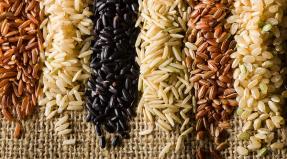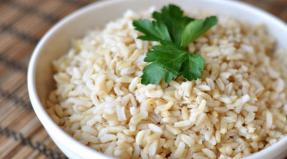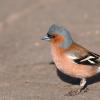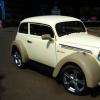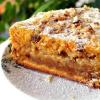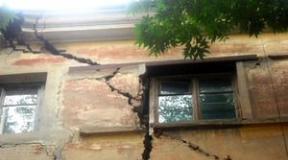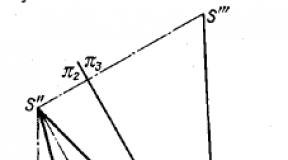Show white mushroom boletus. What does the gall fungus look like, and can it be eaten. A satanic mushroom disguised as a boletus
A true white mushroom, belonging to the genus Boletus, is the dream of every connoisseur of quiet hunting. This mushroom has a local name in different areas, for example: capercaillie, harvester, spikelet,. However, for such a coveted find, inexperienced lovers of quiet hunting often mistake the false appearance of a white fungus.
Differences of a real porcini mushroom
Boletus edulis, or porcini mushrooms, belong to the first category of edible mushrooms and have the following distinguishing features:
- the fruiting body consists of a fairly massive cap and a strong stem;
- a pillow-shaped or rounded cap has a dry, velvety or smooth surface;
- the stem of the fungus has a characteristic thickening at the base or in the middle;
- the outer part is mesh or fibrous;
- mushroom pulp is white or yellowish in color.

On the territory of our country, several types of porcini fungus grow, which differ not only in appearance and description, but also in their nutritional and taste value. To distinguish these species is quite simple - it is enough to determine the main, most characteristic features. Most often in our forests there are white fungus pine, birch and summer.
| Type of porcini mushroom | Hat | Leg | pulp | Taste |
| Pine or Bóletus pinophilus | Up to 25 cm in diameter, convex shape with a smooth or uneven surface of dark brown or red-brown color | Short and powerful, with a thickening at the base, covered with a pronounced fine mesh | Dense and fleshy texture, white coloration, under the skin on a pink cap | Sweetish, not very pronounced, with a pleasant mushroom or nutty smell |
| Birch or Bóletus betulícola | Cushion-shaped, and then flat, up to 15 cm in diameter, with a smooth, shiny or slightly wrinkled surface of yellowish-beige coloration | Barrel-shaped, solid type, whitish-brown coloration, with a white mesh on the upper part | White in color, with sufficient density, without discoloration on the cut | There is no special taste, but the presence of a pronounced mushroom aroma is characteristic |
| Summer or Boletus reticulatus | Hemispherical, and then convex shape, up to 30 cm in diameter, covered with light brown, matte, velvety and dry skin | Thick and fleshy, with an expansion in the lower part, brownish in color, covered with a large mesh pattern. | White coloration, no discoloration on the cut, fleshy, with sufficient density | With mushroom aroma, sweetish or with a nutty aftertaste |
Dangerous doubles
Dangerous to human life and health, the false porcini mushroom looks almost like a real boletus and is very similar to edible mushrooms. Poisonous and inedible counterparts of the porcini fungus are not numerous., but these insidious and fairly common false white mushrooms in our country can cause severe poisoning. Among the most common counterparts of the porcini fungus are bile and.
Photo gallery









False white mushroom: description (video)
| Name | Hat | Leg | pulp |
| Satanic mushroom or Boletus satanas | Hemispherical or round-cushion-shaped, up to 25 cm in diameter, with a smooth or velvety surface, dry, grayish-olive color | Tuberous, barrel-shaped or turnip-shaped with a narrowing at the top, dense, yellowish-red in the center and yellow at the base, with a reticulated pattern | White or yellowish, bluish or reddening when cut |
| Boletus pulcherrimus or Boletus pulcherrimus | Hemispherical shape, with villi on the surface, reddish coloration, up to 25 cm in diameter | Thick, swollen at the base, reddish-brown in color, covered with a dark red mesh pattern on the lower part | Sufficiently dense, yellowish in color, turning blue on the cut |
| Boletus le Gal or Boletus legaliae | Hemispherical shape, with a smooth pink-orange surface, up to 15 cm in diameter | Powerful, one color with a hat, with a red mesh pattern on the top | Whitish or light yellow, turning blue when cut |
| Gall fungus or Tylopilus felleus | Hemispherical, round-cushion-shaped or prostrate, with a dry surface, yellow-brown or dark brown in color | Cylindrical or club-shaped, yellowish or ocher-yellow in color, with a pronounced brown mesh pattern | White coloration, may turn red on the cut, with a characteristic bitter taste |
Signs of poisoning
Inexperienced lovers of quiet hunting often make mistakes and collect unfit for food twins instead of white mushrooms, capable of causing poisoning, characterized by the following symptoms:
- nausea and vomiting;
- diarrhea;
- convulsive conditions;
- headache;
- general weakness.
Quite often, you can encounter hallucinations and sudden mood swings after eating mushrooms masquerading as white, which is due to the negative effect of the toxin they contain on the central and peripheral nervous system. or bitter bitter is used for food purposes quite rarely due to its unpleasant taste, therefore poisoning by this double of the porcini fungus is almost not observed.










First aid
It should be remembered that poisoning can be caused not only by mycotoxins contained in the pulp. A toxic effect on the body is also noted when edible mushrooms are used for food after long-term storage, as well as fruiting bodies affected by fungal flies.

Before receiving qualified medical care, you must:
- put a person with poisoning to bed;
- perform a gastric lavage using a light pink solution of potassium permanganate;
- if it is impossible to carry out a gastric lavage, use a laxative and make a cleansing enema;
- save used dishes with mushrooms.

The victim of poisoning must be taken to a medical facility as soon as possible. Remember: abuse of mushrooms, even of the first category, can harm the body, since they are indigestible foods that can, under certain circumstances, cause symptoms similar to intoxication of the body.
Satanic mushroom: characteristics (video)
Boletus mushroom can be found anywhere in the world. It grows everywhere: in deciduous and coniferous forests, under pines, oaks, spruces, hornbeams, beeches. For the growth of boletus, a neighborhood with trees is required, since a close connection with their root system is important for the development of the fungus.
Boletus mushroom - an edible and healthy mushroom
Boletus is an edible member of the boletus family. A genus of mushrooms from 300 species, including poisonous mushrooms. Some of the species are delicacy mushrooms.
Boletus mushroom is an edible mushroom that grows in all forests.
The appearance of a massive boletus is very well remembered.
- Its deep hat is dyed brown.
- The thick leg is covered with a fibrous or scaly mesh. The leg is thickened in the center or middle.
- Boletus may have yellow, red or white pores.
- Initially, the pulp of boletus has a white or yellowish tint. When cut, the flesh of the fungus may turn blue or red.
In the photo - an image of a boletus mushroom.
Its beneficial properties have led to widespread use in medicine. It contains calcium, iron, lecithin, riboflavin, vitamins A, B1, C and D. Tinctures from this fungus are recommended by traditional medicine for disorders in the functioning of the nervous system. A powder is made from boletus, which is used to prevent the development of osteoporosis.
Eating boletus improves the condition of nails, hair, increases hemoglobin levels, and normalizes cholesterol levels in the human body. Due to the fact that the mushroom contains various antioxidants, the use of this fungus helps prevent cancer.
What is the difference between white mushroom and boletus
White mushroom is a subspecies of boletus. It has the following characteristic features:
- a convex hat of white or light brown color with a diameter of 7 to 30 cm. Sometimes the hat may have a reddish tint;
- club-shaped or barrel-shaped stalk, which may have a whitish or brownish tint;
- the flesh of a young porcini fungus is white, and with age it acquires a yellow tint. When cut, the color of the pulp does not change.
As you can see from the description, these two mushrooms are really different from each other. In addition, the boletus, unlike the porcini mushroom, can reach very large sizes. Some of its representatives can weigh up to 3 kg. Another distinctive feature of boletus is its specific smell of carboxylic acid. During heat treatment, it completely disappears.
Porcini - tubular fungus from the bioletaceae family, a genus of boletus mushrooms. The mushroom is also called: ladybug, capercaillie, feather grass, grandmother, boletus, yellow, cowshed, pan, bear and others. The porcini mushroom got its name in ancient times. Then the mushrooms were often dried, and after this process the pulp of the porcini mushroom remained perfectly white.
White mushroom - description and photo
Hat porcini mushroom (Boletus edulis) can reach a diameter of 32 cm. Slightly convex, matte shade, usually yellow, brown, reddish or slightly lemon in color. The center is usually slightly darker than the edges of the cap. To the touch, the cap is shiny and smooth, sometimes mucous.
The stem of the mushroom reaches a height of up to 25-28 cm. The color is slightly lighter than the cap, it can be reddish or pale brown. The shape is cylindrical, the grid is white or brown.
The tubular layer of the fungus is olive or yellowish in color. The layer can, without much effort, separate from the cap, small pores of a rounded shape.
The flesh of the white fungus is white and sometimes changes to yellowish.

Where to find and when it grows: most often white fungus is found near very old trees, next to chanterelles, russula, greenfinches, under oaks, birches, and spruces. It appears in the month of July and until the end of September. Most often it is found in wooded areas. It is used in the preparation of various dishes, as the mushroom has excellent taste.
- Read also -
White mushroom pine (upland) - information and photo
White Pine Mushroom (Boletus pinicola) often found with a hat with a diameter of 6-32 cm. It is matte, with small tubercles and a small net. The color is reddish, brown, sometimes purple. In young mushrooms, the shape is similar to a hemisphere; in adulthood, it changes to a convex or flat one. During rains, it is slightly slippery and sticky.
The leg of the mushroom is quite thick, white, short and has a reddish or brown mesh. Its height is 7-16 cm, cylindrical in shape with small tubercles.

The tubular layer is olive or yellow, with the usual round pores. The pulp of the pine boletus is fleshy and dense, the smell is very pleasant, white on the cut.
Where to find and when it grows: can be found next to oaks or pines, also grows in groups near beeches, firs and chestnuts. You can meet this mushroom in the month of June and until mid-October.
Oak porcini mushroom - photo and description
Oak porcini mushroom (Boletus reticulatus) has a cap with a diameter of 7-31 cm, in young mushrooms it is spherical, then becomes flat or convex. Color most often: brown, coffee, brown, ocher.
The stem of the mushroom is 8-26 cm high, initially club-shaped, and then becomes cylindrical. There is a white mesh.

The flesh is fleshy, dense, white in color, does not change when cut. The taste is slightly sweet and the smell is very pleasant.
Where to find and when it grows: grows in deciduous forests, under beeches, lindens, oaks. You can already meet the first mushrooms in the month of May.
Birch porcini mushroom - twins, where to find
Birch porcini mushroom (Boletus betulicola) has a hat 6-18 cm in diameter, it is yellowish, white, ocher. In adulthood, it often becomes flat and smooth.
The leg of the mushroom is up to 13 cm high, brown, white solid. The tubular layer is up to 2 cm long, the pores are small and round. The flesh is tasteless, fleshy and white in color.

The bile fungus (Tylopilus felleus), which has a bitter flesh and nets on the stem, is considered to be twins.
Where to find and when it grows: you can see near the birches, on the forest edges. The first mushrooms appear in the month of July and until the beginning of October.
How to distinguish a real porcini mushroom from a false one
The twin of the white fungus is considered gall fungus (Tylopilus felleus) or mustards. Due to its appearance, mushroom pickers often confuse it with oak fungus.
The cap of the mushroom is brown or brown, convex, thickened, 5-15 cm in diameter. The leg is cylindrical, 4-14 cm high, and its finely porous tubular layer is colored gray-white or pinkish. The pulp of the gall fungus is odorless, fibrous.

The main difference is that if you pick a gall fungus, it will immediately begin to darken and acquire a brown hue. Also, mustards are rarely wormy.
Remember that this type of mushroom tastes bitter. Look carefully at the leg, it has a pattern in the form of a brown mesh, and there is no such mesh on a real porcini mushroom.

The gall fungus grows next to coniferous trees, oaks or birches. Fruits until October, grows in small groups (4-12 mushrooms).
- It is interesting -
How to quickly find White Mushroom - video
Kira Stoletova
The boletus mushroom is a whole genus that is part of the Boletov family, the Agaricomycete class, the Basidiomycete department. It has about 300 species, most of which are edible. Distributed throughout the Northern Hemisphere, except for tundra, steppes and deserts. It is considered one of the most valuable edible mushrooms.

Description
Boletus mushrooms are considered one of the largest hat varieties. They weigh 200-300 g, sometimes reaching a kilogram. Record holders grow up to 2-3 kg. These fruits look like this:
- the fruiting body is massive, dense;
- the leg is thick and dense, with a characteristic thickening at the base or in the center, sometimes it has a barrel-shaped shape;
- leg height - 3-20 cm;
- the shade of the leg is light, it can be reddish or brown, with a characteristic mesh;
- the surface of the leg is rough, sometimes smooth;
- the hat is wide, flat or resembles a pillow, diameter is from 5 cm to 25 cm;
- color varies from light yellow and beige to dark brown and almost black;
- the surface of the cap is velvety or smooth, after rain it becomes slippery;
- hymenophore tubular, dense, yellow to olive, sometimes reddish, rarely white (in young specimens);
- spores are yellowish, brown or olive-brown;
- the pulp is white, dense, crunchy with a pleasant mushroom smell.
Edible boletus mushrooms are tasty, belong to category 1-2 in terms of culinary value. Many species remain light after processing. The pulp exudes a strong mushroom aroma, which intensifies when dried.
Mushrooms are cooked in different ways: boiled, pickled, dried, salted and frozen. They contain many useful substances. They are eaten for anemia, problems with bone tissue and joints. But this food is heavy for the digestive tract.
Places of growth
Boletus grows in the temperate zone of the Northern Hemisphere. The largest crops of these mushrooms are harvested in the forest zone and taiga, the boletus grows less often in the forest-steppe. This representative of the Bolet genus does not grow on the territory of the tundra, forest-tundra and in the steppes. Mushrooms are also found in the forests of the highlands. The closer to alpine meadows, the less often this mushroom is found. At an altitude of 1500-2000 m above sea level, it does not grow.
The name itself says that mushrooms are found in the forest. They love coniferous forests, grow near pines and spruces. They are found next to oaks, chestnuts, beeches and hornbeams. Boletus appears less often in birch-coniferous and deciduous forests.
Mushrooms begin to be collected in June, but the peak season is in August and September. If autumn is cold, mushrooms quickly disappear. In the southern regions, the first forest mushrooms appear in May and grow until the end of October. Fruiting bodies grow in humid and warm weather, live no more than a week.
When searching, you should carefully examine the litter under pines, fir trees, hornbeams, oaks and beeches, places next to anthills. Young specimens are small, hiding under the leaves. Mushrooms rarely grow alone, if you draw a circle around a found specimen with a diameter of 10-15 m, then within it you will find a whole family.
Edible species
Edible types of mushrooms are the most popular. They are found in summer and autumn in coniferous, deciduous and mixed forests. These mushrooms have similar features. Many find different species, but give them a common name.

The most common edible varieties are:
- white;
- birch;
- oak (mesh);
- bronze (spikelet);
- Burroughs;
- bicolor;
- yellow;
- golden;
- royal (woody);
- porous;
- adnexal;
- Fechtner;
- Horton;
- ordinary oak;
- semi-white;
- maiden.
Porcini
Boletus porcini mushroom is the most famous species. He got his name because of the light shade that persists during cooking and drying. The hat in young specimens is semicircular, cushion-shaped, then in older specimens it becomes flat. Shade from beige to light brown. The hymenophore is white at first, turning yellow or becoming greenish. The leg is elongated and thickened, grows up to 20 cm, has a barely noticeable mesh pattern. The pulp is dense, has a white color and does not change color on the cut.
White mushroom in upland more often appears from the beginning of June. In the future, growth occurs in mid-July, August, the first half of September. The season ends in October. Productivity depends on the weather, the highest - in warm, humid summer or autumn.
white birch
The birch look is similar to regular white. The main difference is that the fruiting body is lighter, in young fungi it is almost colorless. It grows up to 15 cm. At an early age, the hat has the shape of a pillow. The leg is whitish-brown with a mesh on top, looks like a barrel. The middle is dense, white, the color on the cut does not change. Mushroom aroma.
Most mushrooms are found near forest paths, clearings and clearings. This species is distributed in territories from the west of Siberia to Murmansk and northwestern Europe. Unlike the classic white boletus, it prefers not a pine, but a forest mixed with birches.
Oak
A large mushroom, its hat sometimes grows up to 30 cm, the thickness of the stem is 4-7 cm, the length is 10-25 cm. The top is coffee-colored, brown, grayish with brown, walnut-brown, ocher. The leg is walnut with a white or brown thin mesh. The pulp is compacted, in old specimens it is spongy and springy, with a pronounced mushroom aroma.
The boletus appears already in May and grows until October. They find fruiting bodies under oaks, sometimes they grow under beeches and lindens. This species is widespread in the mountains and foothills, rarely found on the plains.
Bronze
The bronze boletus is a rare species found in the southern regions of Russia. It has a dense squat fruiting body, grows in a single copy or in a group. The hat is dark brown with a bronze tint. The leg is brown and mesh. The pulp is dense, white on the cut, but after a couple of minutes it darkens a little. The taste is refined, the smell of mushrooms and tender.
Burroughs

Burroughs' disease grows in the North of America. It has a large, fleshy cap, with whitish or yellowish-brown dry skin. In young specimens, it is rounded, then spreads out. In diameter sometimes reaches a quarter of a meter. Its lower part (tubular hymenophore) is white at first, then becomes yellow-green. The leg is in the form of a club of medium thickness, high, with a whitish mesh. The pulp is white, does not change on the cut, has a strong aroma.
Bicolor
The bicolor boletus is another American species that grows in forests with coniferous and deciduous trees. The cap of the mushroom is a rich red color with a slight pinkish tint. In young specimens, it is convex, then becomes flat. The hymenophore is yellow, like the pulp, it turns blue on the cut. Leg pink-red, medium thickness, mesh.
Yellow
The yellow boletus is a rare species, it is found in the west of Europe and in the Ussuri region of Russia. Grows in forests with oaks and beeches. The cap is yellowish-brown, slightly convex, then (as it grows) flat. The skin is wrinkled, but sometimes smooth. Tubes are light, 10-20 mm long. Leg without mesh, covered with dark dots and scales. The flesh is bright yellow, quickly turns blue on the cut, odorless.
Golden
The golden boletus used to be found only in the north of America, but now it is also found in Europe. The cap of the golden boletus is slightly rounded, with a reddish-brown tint, dry and velvety. Hymenophore yellowish or olive, with notch at the stem, turns yellow when pressed. Leg with a pronounced mesh, slightly ribbed in appearance. The pulp is dense, does not change on the cut, the taste is sour, the aroma is weak.
Royal
The royal boletus is a small, squat mushroom with a red-pink hat that turns pale as it grows. The shape is convex at first, becomes flat over time, a notch appears in the center. The tubules of the hymenophore are elongated, greenish-yellow. The leg is yellowish with a mesh on top. The pulp of the same color turns blue on the cut, the mushroom aroma is pronounced, the taste is pleasant. This species grows in deciduous forests, prefers symbiosis with beeches.
Porosporous
The porosporous boletus in appearance resembles a flywheel. He has a small hat of a gray-brown hue with numerous whitish cracks. The hymenophore is lemon-yellow, when pressed, it changes color to blue. Leg gray-brown, dark below. The flesh is whitish, compacted, acquires a blue tint on the cut. The mushroom is tasty, there is a slight aroma of fruit. It grows next to coniferous, less often - broad-leaved trees.
Adnexal

A rare mushroom that prefers to grow in the southern regions of the temperate zone. The adnexal boletus has slightly rounded or flat caps, they are colored from yellowish-brown to brown, the skin is velvety. The flesh on the cap is dense, the hymenophore is thin, with rounded tubes, when pressed, it acquires a blue-green tint. The leg has a lemon tint, there is a mesh that disappears in old specimens. The shape of the leg is cylindrical or club-shaped, the height is up to 12 cm (with a cap diameter of 7-20 cm). The middle is yellow, which changes to blue on the cut.
Fechtner
Boletus Fechtner grows on alkaline soils enriched with limestone, prefers broad-leaved forests. The cap of this species is silvery-white, at first velvety and wrinkled, then smoothes out, and becomes slippery in high humidity. The hymenophore is yellow, concave near the stem. The leg is yellowish on top, red with brown below, has a mesh pattern. The shape of the stem is tuberous, with a thick base. The pulp is fleshy and dense, acquires a delicate blue tint on the cut, the smell is weak.
Horton
Horton's boletus is a small fungus that grows in oak and beech groves. The hat has a diameter of 4-10 cm, red-brown or ocher-brown in color. Its surface is velvety and wrinkled. Hymenophore is from yellow to olive colors, does not turn blue when pressed. Leg in the form of a club or cylinder, smooth, without mesh, reddish. The flesh is whitish or yellow, not aromatic and tasteless.
Dubovik ordinary
Boletus, or dubovik, is a common species that appears already in the last weeks of May. Then it grows in the second half of August and until the end of September. The hat is big. The hue is uneven, on the surface it has brown-yellow, gray-brown spots. Hymenophore changes color from ocher to dirty olive, thin, with small tubules. The leg is thickened, club-shaped, yellowish above, red-brown below, with a pronounced dark reticulum. The flesh is yellow, turns blue on the cut, and then turns black. The smell and taste are almost not expressed.
half white
The semi-white boletus mushroom is a heat-loving species, therefore it grows in the south, in coniferous and mixed forests. The hat is the color of light clay, reddish or light gray. Dimensions - 5-20 cm, the skin of young specimens is velvety, in old specimens it is smooth. Hymenophore golden or green-yellow. The leg is low, up to 10 cm, at first tuberous, then stretches, acquiring the shape of a cylinder. From above it is rough, the shade is yellow, below it is red, the mesh is dotted. The middle is yellow, it becomes light pink on the cut, the taste is sweetish, there is a slight smell of carbolic acid, especially at the stem.
Maiden
The maiden species is now not attributed to the genus Borovik (Bolet), but in appearance it resembles its distant relatives. The mushroom has a flat hat with curved edges, the diameter is from 5 cm to 20 cm. The skin is velvety, yellow or red-brown. Hymenophore 1-2.5 cm, lemon, then brown. The leg tapers at the base, its thickness is 2-6 cm, there is a lemon mesh. The flesh is yellowish, turns blue on the cut, has a pleasant mushroom smell. Boletus maidenhair grows in the deciduous forests of southern Europe.
Conditionally edible species
Conditionally edible include species that require additional processing during cooking. They have a bitter or pungent taste, an unpleasant odor. It is advised to boil such mushrooms 2-3 times or soak for several hours in water. They belong to category 3-4 in terms of culinary value.

The most common conditionally edible species:
- wolf;
- beautifully colored;
- oak Kelle;
- mottled oak;
- flywheel red;
- hare.
wolf
Wolf boletus grows in the Mediterranean and in the north of Israel, forms a symbiosis with oaks, appears in November - January. His hat is small, 5-10 cm in diameter, with a pointed edge, always has a pink or red tint against a brown background. The skin is dry, in young specimens it is covered with a felt coating. The tubes of the hymenophore are yellow at first, then turn red.
The leg is bright yellow, with darker dots, smooth, without mesh. Height - 4-8 cm, diameter - 2-6 cm. The flesh is dense, yellow, then turns blue, does not have a special aroma and taste. Before use, the mushroom is boiled 2 times for 15-20 minutes, the water must be drained.
beautifully painted
Borovik beautiful got its name because of the delicate pink skin on the edges of the cap. The color of the skin is light gray, it is rough, covered with felt, becomes smooth over time. The tubules are olive-yellow, easily separated from the fleshy part. The leg is bright yellow, tapering at the bottom. The pulp is firm. On the cut, it acquires a pale blue or light blue tint.
In young specimens, the aroma is fruity, then it deteriorates. The taste is not good. Raw beautifully colored boletus is poisonous. If it is soaked and boiled 2-3 times, it is edible, but not tasty. Therefore, it is rarely collected, classified as inedible.
Dubovik Kelle
Dubovik Kelle prefers acidic soils, grows in oak groves, less often in coniferous forests. It is found in clearings in tall grass and moss. The hat is brown, occasionally has a yellowish tint. In dry weather it is soft and velvety, after rain it is sticky and slippery, like an oil dish. Leg yellow, 2-5 cm thick and up to 10 cm high, covered with red scales. Mycelium threads are clearly visible at the base.
The flesh on the cut immediately becomes blue, sour in taste, the aroma is weak, never wormy. This species contains substances that irritate the stomach. Before use, it is soaked for 5-10 hours, then boiled for 30-40 minutes, the broth is drained. After frying or stewing, mushrooms become edible.
Dubovik speckled
Dubovik speckled is sometimes also called granular. It appears in the forests from the end of August and bears fruit until October, in the southern regions it is found already in May. The hat is fleshy, in the form of a pillow of brown color with different shades of red on it. The hymenophore in young specimens is yellow-olive, turning red with age. The stem is tuber- or barrel-shaped, reddish-yellow, with numerous red scales and speckles. The middle is bright yellow, at the base the knives are reddish. Turns blue on the cut. They eat the mushroom after boiling it twice a day.
Flywheel red
The red flywheel is a false boletus belonging to a different genus. Previously, it was included in bolets. It is rare, representatives of this species grow in deciduous forests, near old roads, clearings. It has a fleshy and fibrous pillow-shaped hat. Skin tone cherry, purple, rose red. The hymenophore is golden yellow in young specimens to olive brown in older specimens. Leg yellow-brown, lighter on top, with reddish scales. The flesh is yellow, slightly blue on the cut.
Irina Selyutina (Biologist):
Red mushrooms, or red boletus, are classified in the 4th category of edibility. The first fruiting bodies appear in August - September. Grows in deciduous forests. Gives preference to oak forests.
Due to the fact that it is not found often, it is collected along with other mushrooms - “along the way”. The pulp of the leg in its lower part has an interesting and characteristic feature: red dots.
This species is rarely collected, not only because it is rare with a wide distribution (range), but also because the fruiting bodies are very often affected by worms, which makes collection unrealistic.
Hare
The hare mushroom belongs to the Boletovye family, but is not a boletus, although their description is similar. It is sometimes called chestnut or false white. The hat is reddish-brown or red, has a velvety or, as it were, powdered top. The hymenophore is white, turning yellow with age. The stem is in the form of a cylinder or a club, in young mushrooms it is dense, in aging mushrooms it is loose, with chambers and voids. The middle (pulp) is white, does not change color. When cooked, it becomes bitter, if it is dried, this property disappears. It will be possible to find a hare mushroom until mid-November.
Inedible species

The genus Borovik includes a number of species that are unsuitable for human consumption. Among them are toxic and even deadly poisonous. All of these varieties have specific characteristics. You should definitely familiarize yourself with them in order to understand the difference between the species, and not to put a poisonous mushroom in the basket.
Common poisonous and inedible species:
- handsome-legged;
- rooted;
- Le Gall;
- beautiful;
- pink purple;
- pink-skinned;
- Satanic.
beautiful-legged
Beautiful or beautiful-legged - this is an inedible, but not poisonous species. His hat is olive or light brown, dry, fibrous in young specimens, the edge is wrapped with age. As the fungus matures, the hymenophore changes color from lemon yellow to olive. It is thin, the tubes are pink in color, turn blue when pressed. The leg first resembles a barrel, then a mace or a cylinder. Yellow above, carmine-red in the middle, reddish-brown below, almost colorless in aging fruiting bodies. The middle (pulp) is firm, creamy, with a taste of bitterness. It grows under fir trees, less often under deciduous trees.
Rooted
The rooting or stocky bolet loves warmth and prefers the root system of deciduous trees to create mycorrhiza. This boletus is inedible, but not toxic either. The hat sometimes grows up to 30 cm. The shape of a pillow or hemisphere, the edges are bent, in old mushrooms they are wavy. The color is light gray with a pale yellow or greenish tint, the surface is dry. Hymenophore yellow-olive, turns blue when squeezed. The leg is lemon on top and olive below, with a thin delicate mesh, short. The middle is dense, has a pleasant aroma, but a bitter taste.
Le Gal
Borovik Le Gal was discovered by the French scientist Marcel Le Gal, after whom he got his name. The term "legal" is also found in the literature. It grows in deciduous forests, under oaks, hornbeams and beeches, it is poisonous. The hat is pink-orange, at first spherical, then convex and prostrate. The hymenophore is tubular, its components (tubes) are red, grow with teeth to the stem. The middle smells like a mushroom, whitish or yellow, turns blue when cut. The stem is the same shade as the hat, covered with a red mesh, barrel-shaped.
Beautiful
The beautiful boletus is found on the west coast of the United States in summer and autumn. It is toxic, causing indigestion and diarrhea, but there have been no fatal poisonings. The hat has a specific reddish hue, sometimes it is olive-brown. The tubules of the spore-bearing layer are yellow-green, the pores are blood-red. The leg is swollen, reddish with brown and a characteristic purple or scarlet mesh.
Irina Selyutina (Biologist):
Belonging to the category of poisonous mushrooms, the beautiful boletus is capable of causing gastric distress. After some time, the symptoms (diarrhea, nausea, vomiting, abdominal cramps) disappear without a trace. Fatal cases as a result of poisoning with Boletus boletus in its natural habitats (mixed forests of the west coast of America and the state of New Mexico) have not been registered.
The pores of the hymenophore are colored in a rather bright color - blood-red, and when pressed on them, they acquire a blue tint.
This fungus is mycorrhizal. Forms a mushroom root only with representatives of coniferous tree species.
The fruiting season begins at the end of summer and lasts until the end of autumn.
pink purple
Boletus purple, or pink-purple, has a characteristic cap color. On a gray background there are spots of wine, purple, brown-red or pink shades. If the fruiting body is turned over, blood-red pores are visible, while the hymenophore itself is olive-yellow. The leg is club-shaped with a thickening at the bottom, covered with a reddish mesh. The middle (pulp) is firm, with a sour-fruity smell. On the cut, it first turns blue, then turns black, and eventually becomes wine-red. The species grows on limestone soils, in broad-leaved forests.
Satanic
The satanic mushroom, or satanic pain, looks specific, it is difficult to confuse it with ordinary white. The hat is light gray, it can be olive or ocher, pink stains are often visible on it. On closer examination of the hymenophore, it becomes noticeable that the tubules are yellow-green or yellow-olive. The pores change their color from yellowish to red, carmine and blood red. When pressed, they turn blue.
The leg is yellowish, carmine or orange on the cut. From above it is covered with a red mesh with rounded cells, the shape is tuberous, tapering at the top. If the mushroom is cut, it first turns red, then turns blue, old specimens smell unpleasant. The fungus causes damage to the liver, nervous system, spleen.
Conclusion
Boletus or white mushroom is the most popular species. It represents the vast Boletaceae family, which includes more than just edible varieties. Before going to the forest, it is important to read carefully and, most importantly, remember the description of useful and dangerous mushrooms or false mushrooms. Growing at home is challenging.
White mushroom has a solid size and for this reason is especially loved by mushroom pickers. It belongs to the genus Boroviks. It has unique taste characteristics and characteristic aroma. There are a total of about 300 species of boletus. Among them you can find both edible and inedible options. Among all this diversity, 10 of the most common varieties can be distinguished.
Bronze boletus
This variety is found in the forests of Europe, especially the southern and western parts. Most often it grows in deciduous forests. Likes neighborhood with trees such as:
- hornbeam;
Sometimes the gall fungus disguises itself as white. It is inedible and has an unpleasant aftertaste. You can recognize it by the top. The lower region of the white mushroom is white or yellowish, while the gall has a cap with a pinkish sheen. If you cut the pulp, the latter will have the same pink tint. In addition, his legs are covered with a dark mesh.
Grows in deciduous forests of Europe.
Krasivonozhkovy has a wrinkled matte hat. From above it has a lemon-yellow tint. The central part is red, turning into a brown shade. The flesh is bitter, turning blue on the cut. You can meet her in the mixed forests of the European part of Russia.
The beautiful one is distinguished by an olive-brown color, after cutting it turns blue. The bottom has a dark red coating. The satanic mushroom is characterized by yellowish flesh that turns blue or red when cut. The leg has the shape of a barrel, tapers from below. Grows in deciduous forests.
